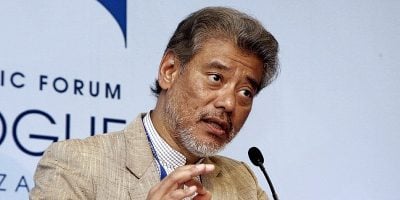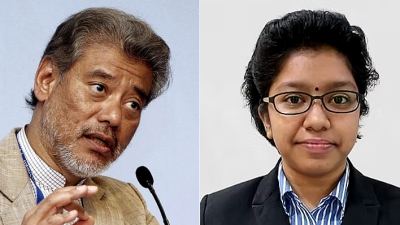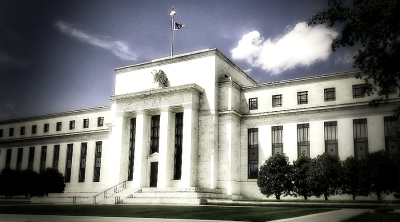
A gathering “perfect storm” due to various developments — several quite deliberate — now threatens much devastation in the Global South, likely to hurt the poorest and most vulnerable.
Globalization’s protracted decline
The age of globalization had mixed consequences, unevenly incorporating national markets for labor, goods and even some services.
It ended gradually with the trend far more pronounced following the protracted worldwide stagnation since the 2008 global financial crisis.
Sometimes still referred to as the Great Recession, Western central banks resorted to unconventional monetary policies, mainly “quantitative easing,” to keep their economies afloat.
But easier credit enabled more financialization and indebtedness than recovery, let alone sustainable development.
But the end of the era of globalization did not mean a simple return to the status quo ante. Most economies had been transformed irreversibly by economic liberalization, both nationally and internationally, with dire lasting consequences.
Market pressures for fiscal austerity were strengthened by conditionalities and advice from international financial institutions.
This inevitably led to deep cuts in government spending, leaving little for public investments which might contribute to the recovery of the real economy.
Interest rate hikes accelerate stagnation
The 2008 Wolfowitz doctrine, from late in the Bush Jr presidency, was revised by the Obama administration to launch the second Cold War.
The Covid-19 pandemic and the last two years of wars and sanctions have worsened supply-side disruptions, exacerbating “cost-push” inflation.
Some prices spiked due to opportunistic market manipulation by investors and speculators as well as deliberate disruptive interventions for political advantage.
The rule of law — even once sacred property rights — has been sacrificed for political expediency, undermining trust, especially in states.
Hence, concerted interest rate hikes by influential Western central banks have proved to be an unnecessary, inappropriate and blunt demand-side tool to address contemporary inflation driven primarily by supply-side factors.
Instead of addressing inflation due to supply disruptions, higher interest rates have cut both private and government spending, resulting in less demand, jobs and incomes in much of the world.
In the US, successive presidents maintained full employment since Obama inherited the 2008 global financial crisis.
Uniquely, its central bank, the Federal Reserve, has a dual mandate to maintain full employment and financial stability.
All over the world, the deliberate and concerted interest rate hikes of 2022 and 2023 have proved to be both contractionary and biased against labor and jobs.
Global South’s hands tied
Policymakers in the Global South are greatly constrained by their circumstances.
Exposed to global markets with limited fiscal and monetary policy instruments at their disposal, they are captive to pro-cyclical policy biases.
The International Monetary Fund and other international financial institutions tend to demand fiscal austerity conditionalities in return for any credit relief provided.
Thus, recipient governments are subject to spending constraints instead of providing relief.
Worse, many legislatures have imposed unnecessary spending constraints on themselves, supposedly to enhance government fiscal credibility.
Supposedly independent central banks have further compounded monetary policy constraints.
Such central banks are primarily responsive to international and national financial interests rather than national policy priorities.
Following monetary and financial liberalization in recent decades, developing countries are much more exposed to debt crises worse than those experienced in the 1980s.
Then, governments in Latin America, Sub-Saharan Africa and elsewhere had borrowed heavily, mainly from US and UK commercial banks.
After the US Fed chair Paul Volcker raised interest rates sharply from 1980, severe fiscal and debt crises paralyzed many of these governments for over a decade.
The debt exposure level is much higher and borrowed from varied sources, significantly more market-based and non-bank.
Governments have also provided guarantees for state-owned enterprises to borrow heavily, but less accountably than with sovereign debt.
New divides in post-unipolar world
The unipolar world moment after the end of the first Cold War briefly saw unchallenged US hegemony.
The Organization for Economic Cooperation and Development developed policies for the Global North in trade, investment, technology, finance, tax and other vital areas, typically at the expense of the South.
More recently, the “New Cold War” or geopolitical policies, including illegal sanctions, have frustrated developing countries’ aspirations to reach the Sustainable Development Goals, adapt to global warming and its effects, and retrieve a fairer share of global corporate income tax revenue.
With most economies barely growing and efforts by many governments to reduce imports, export opportunities have become more uncertain and constrained, ending a crucial premise for globalization.
With higher interest rates, even finance has abandoned developing countries in “flights to safety” to the US.
Lacking the “exorbitant privilege” of issuing the US dollar, still the world’s reserve currency, most developing countries lack monetary, fiscal and policy space.
Unlike rich nations which borrow in their own currencies, most developing countries remain vulnerable to foreign exchange rate vagaries.
Poorest getting poorer
With Obama’s “Pivot to Asia” launching the US efforts to check China, its lending to developing countries, including in Sub-Saharan Africa, fell from around 2016.
Despite higher borrowing costs, many of the poorest countries turned to private creditors.
But private market lending to poor nations dried up from 2022, as the US Fed raised interest rates sharply for almost two years.
As debt service costs soared, distress risks have risen sharply, especially in the poorest nations.
While not obviously due to a conspiracy against the Global South, there is little concern for the predicament of the worst off in the poorest countries.
Meanwhile, poverty in the poorest countries has not declined for over a decade.
With international disparities growing at the expense of the poorest people in the poorest nations, the desire to emigrate continues to rise, although mainly unaffordable to the poorest.
(Jomo Kwame Sundaram was an economics professor and United Nations Assistant Secretary-General for Economic Development.)
ADVERTISEMENT
ADVERTISEMENT





































